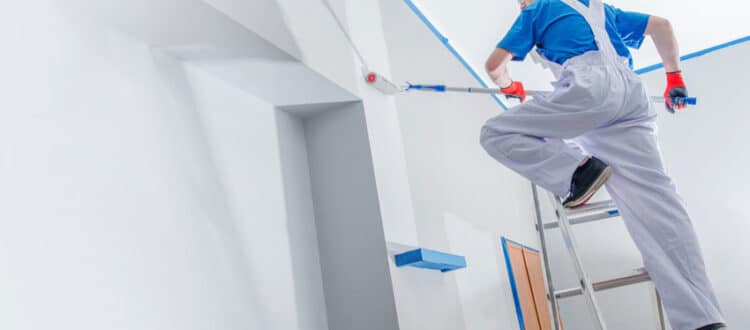A Complete Factory Painting Guide
If you’re among the 636,019 manufacturing businesses in the US, keeping your facilities well-maintained is likely a top priority. Factory painting is one of the most essential parts of this since it impacts multiple aspects of your aesthetics, safety, and functionality.
But what goes into a factory paint job? Why is it important? Read on for a complete guide to factory painting and to get some tips for performing this process the right way.
The Ins and Outs of Factory Painting
Factory painting is exactly what it sounds like- the process of repainting and renovating the walls of your factory. This often means refurbishing the ceiling as well. The goal is to make the walls look even and to paint them a color that maximizes productivity.
Since manufacturing plants are astronomically large spaces, painting them is a costly but important endeavor. It’s important that you partake in this process at least once every 10 years so your space doesn’t become dilapidated and ugly.
These large-scale painting projects aim to coat the entire walls of your factory with even and well-selected paint. This typically involves many coats, so the process becomes even lengthier. However, it’s well worth it when you consider its many benefits.
Why Is This Important?
A poorly maintained factory space means that employees will be subjected to surroundings that look sloppy and unclean. Since many studies have linked clean and well-kept-up spaces with employee satisfaction and productivity, this can prove problematic for employers.
When you invest in keeping your space neat and well-maintained, you’re likely to increase the level of output that your workers can produce.
Since factory workers are also likely to be less stressed in these situations, you also will have higher employee satisfaction rates. This means less turnaround over time. You won’t need to constantly waste money training new employees.
Another, possibly more important function is that factory painting serves is contributing to safety. Many factories have walls made from metals such as stainless steel and heavy aluminum. These surfaces are susceptible to rust and mold growth, which can cause respiratory issues for those in your space.
When you get your factory repainted, you invest in getting new coats of paint made from material that prevents corrosion. You also get experts that know how to eliminate mold and other potential health hazards.
Another benefit to preventing corrosion is that your space will last longer. Even if it costs a bit of money to get your factory repainted, it will save you from spending more on replacing walls and equipment in the future.
Tips for Painting Your Factory Walls
There are several steps that you must take prior to beginning the factory painting process. The first thing you need to do is choose the best type of paint to fit your needs. Choose a color that will maximize workplace productivity by considering color psychology.
More importantly, though, make sure that the paint meets the standards necessary for industrial use. It needs to be corrosion resistant and able to withstand the steam and chemicals used in your facility. Not selecting the right paint isn’t just unsafe but can also land you with a hefty fine.
Odorless paints are also a must. Fumes can become toxic when inhaled for long stretches of time, so it’s critical that you minimize people’s exposure to these scents.
After selecting your preferred paint, clean the floor of the factory prior to hiring painting professionals. This will prevent anyone from becoming injured due to obstacles. If you’re painting the floor, it also gives you space to start at the edges and move inward.
Professional painters will do the rest, covering your entire facility from wall to wall and from floor to ceiling. They will make safety a top priority in doing so to ensure that you don’t wind up responsible for employee injuries or hazard exposure.
While these professionals are there, though, you also will need to follow strict safety guidelines. This means roping off freshly painted surfaces so people cannot get to them.
Can You DIY The Painting Process?
Factory painting isn’t a process that you can do yourself. It would be incredibly dangerous to try reaching high-up spaces on a factory wall without the appropriate equipment. Since manufacturing plants are also filled with heavy machinery and other hazards, it’s a bad idea to try painting around obstacles.
Additionally, DIY painting would be incredibly time-consuming and inefficient. You also would likely miss spots and need to go back to cover them. This could lead to both a terrible aesthetic and poorly-coated areas.
Luckily, experts are here to help you evenly and safely coat your factory walls. These professionals are trained on how to eliminate corrosion and get hard-to-reach areas of any industrial space. They also are happy to keep you in the loop so you can tell them exactly what you’re looking for when hiring a contractor.
Hire a Factory Painting Service Today
While there are many steps towards getting your factory painted the right way, hiring a professional is an essential first step towards completing your paint job. We’re committed to assisting you with all parts of the painting process to ensure that you’re satisfied with the outcome.
Now that you know all about factory painting and how you can best renovate your space, it’s time to get started. Request a free painting estimate for a clearer understanding of your finances and timeframe as you move forward with your project.

